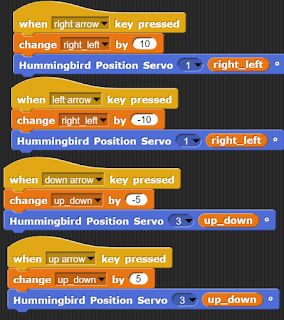This is the printer I built from a kit.
After considerable research I bought an
Original Prusa i3 MK3S+ 3D printer. There are thousands of 3D printing companies out there. My first consideration was the open hardware / open software criterion. Prusa is part of the
RepRap project (humanity's first general purpose self replicating machine) so they went onto my short list. Then Prusa has the best reviews so I was sold.
Through talking to teachers who use 3D printers I became aware of their main limitation for school use. They are slow. Even a simple print takes about 20 minutes so with the setup and remove the print time added on you will only see one student print their design in a normal lesson.
So, I floated the idea of families buying a kit, students assembling them at school and the family keeping the printer. Everyone I mentioned this to almost immediately said “great idea”. So we sent the invitation out to the school community and so far eight families have come on board.
The advantage of this plan is we get 3D printers into the school community without having to worry about the slowness problem. And to build a 3D printer is a really good step towards understanding how they work.
I needed to get a head start on this so I found a company in Australia,
3d Print Specialist that sold the kit. It arrived just before Xmas day and then the fun really started!
We are advising the parents to buy from Czechoslovakia, it is cheaper that way, but there is a considerable lag time.
It says on the Prusa that their fastest customer built the MK3S+ in 4 hours!! Ha ha. Well, I guess I'm their slowest customer. My rough estimate for my build time was 75 hours! I certainly didn't rush!
The build instructions are on the Prusa site:
Original Prusa i3 MK3S+ build instructions
Original Prusa MINI+ build instructions
The instructions are very well thought out, colour coded with pics, with numerous warnings in red. Fellow builders from the community leave comments at each step, which provide essential further help. Of course this arises from the open hardware and software ethos of the Prusa community.
It gave me hope to find out that others found it hard, some even found it harder than me!
In the end I was successful! The last, testing stage was nerve racking since some of the tests take a while. Then when I got to first layer calibration I wasn't confident since I had to nudge the z axis since the test print wasn't sticking on the sheet. Really I just did this by guess and test and it came our correctly after a couple of guesses. Here's my just about perfect test print:
Without going into all the detail I'll mention some of the techniques I learnt along the way since these will be valuable to pass onto my students later:
-
don't throw anything out prematurely
-
screw seating technique, watch this video from Alex
-
how to exert force without breaking the part (force and support at the same time)
-
use the grease out of the bearing bags to grease nuts that are hard to fit and the rods before sliding into the misumi bearings (one reason not to throw stuff out once used)
-
use of AA battery or flat side of screwdriver to push in the belts
-
extruder cable sorting technique (one comment was very helpful here)
-
bending the zip ties using the pliers and wrapping around
The toughest parts of the build are the extruder and fitting all the cables into the too small Einsy box (lots of complaints from the builders about that). I'll show pictures of those parts so you are forewarned!
Here is a
ridiculous video showing a young girl, Aurora, building the whole thing in 38 minutes




